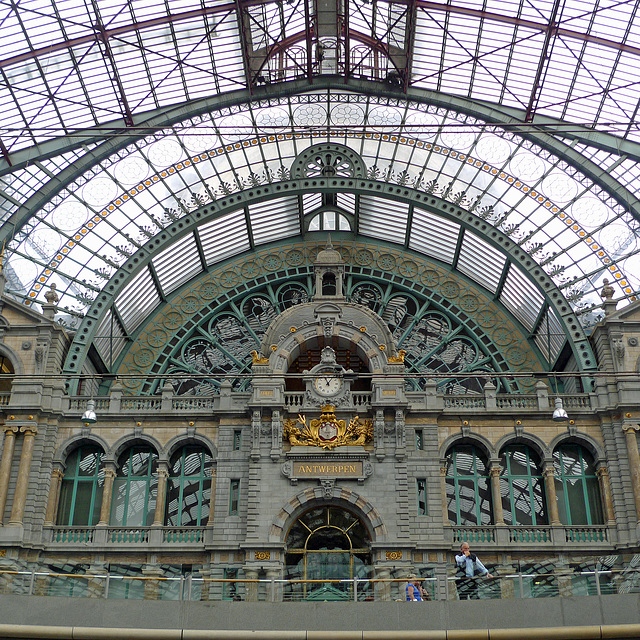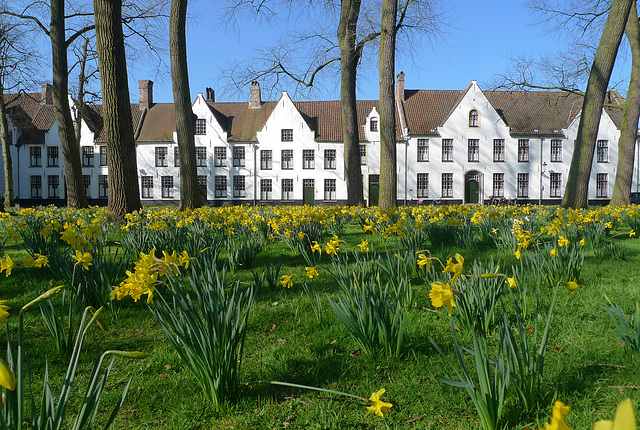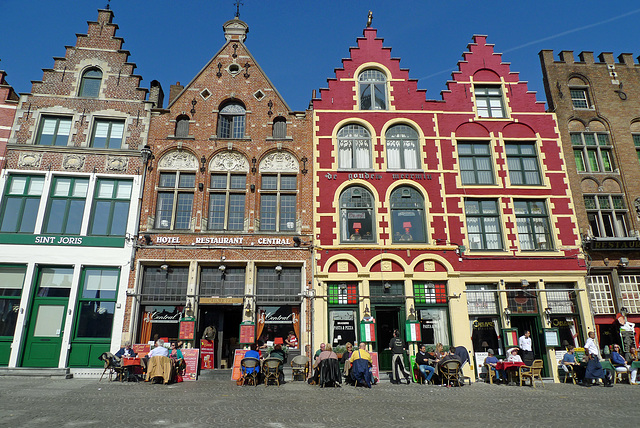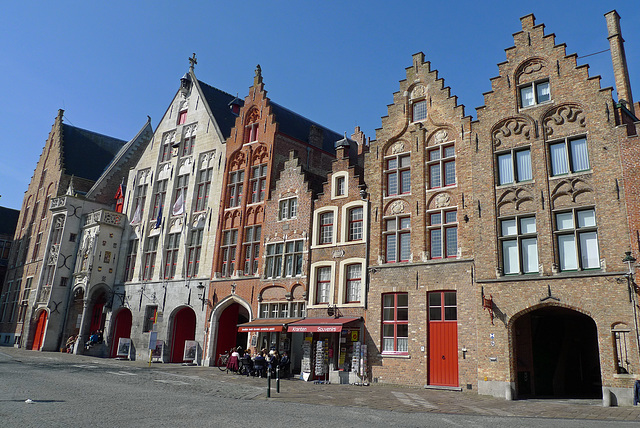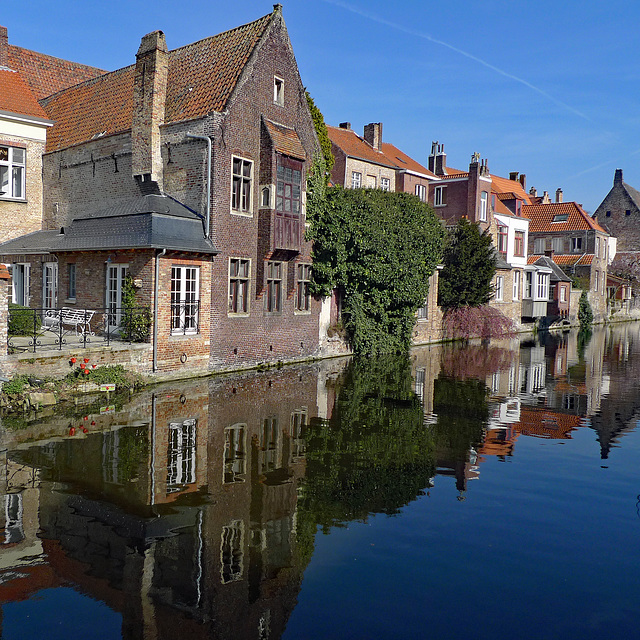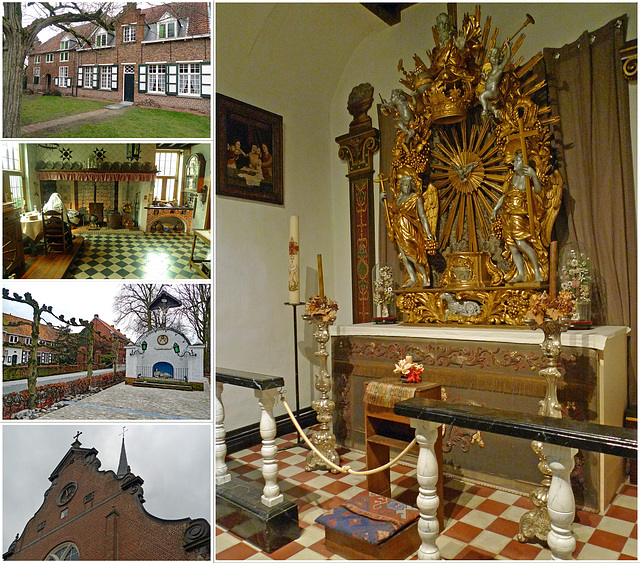
Europa - Europe
My most beautiful pictures captured in different European countries.
België - Antwerpen, stadhuis
The majestic stadhuis (city hall) is built in the sixteenth century; construction of the building - after designs made by Cornelis Floris de Vriendt and several other architects and artists - started in 1561 and was completed four years later. At that time Antwerp was one of the largest and most important cities in the world. As one of the world's most powerful commercial centers the new city hall was to become a symbol of the city's wealth and power. It is considered being the most important Renaissance building in the “Low Countries”.
During the Spanish Fury in 1576, the new building was set on fire by Spanish soldiers, leaving only the exterior walls standing. The city hall was rebuilt three years later, in 1579.
The façade is richly decorated with statues, ornaments and coat of arms. It is facing the Grote Markt with its wonderful 16th and 17th centuries houses (PiPs). The stadhuis is decorated with the flags of the countries of the European Union, in addition to flags of all the countries that have a consulate in Antwerp.
The ground floor of the building originally housed small shops. The construction of the city hall was partly funded with the rent received from those shopkeepers.
The stadhuis of Antwerp is since 1999 inscribed on UNESCO's World Heritage List along with the belfries of Belgium and France.
België: Antwerpen-Centraal
Antwerpen-Centraal (Antwerp Central) is the name of the main railway station in Antwerp. The original station building was constructed between 1895 and 1905; it replaced the wooden train station from the mid 19th century.
The stone clad terminus buildings were designed by the Bruges architect L. Delacenserie. It has a huge dome above the waiting room and eight smaller towers of which six were demolished during the 1950s. Fortunately they were reconstructed in 2009 together with several ornaments, including large lion statues. The rich interior is lavishly decorated with more than twenty different kinds of marble and stone.
Nowadays the railway station is considered being the finest example of railway architecture in Belgium. In 2009 the American magazine “Newsweek” judged Antwerpen-Centraal the world's fourth greatest train station. Five years later it was awarded by the British-American magazine “Mashable” with the first place for the most beautiful railway station in the world.
België - Brugge, Begijnhof
The 'Prinselijk Begijnhof Ten Wijngaarde’ (Princely Beguinage Ten Wijngaarde) with its white-coloured house fronts and tranquil convent garden was founded in 1245. This little piece of world heritage was once the home of the beguines, emancipated lay-women who nevertheless led a pious and celibate life. It is the only preserved beguinage in the city of Bruges.
Nowadays, the Beguinage is inhabited by the Sisters of the Order of Saint Benedict; the church is still fully functioning. The complex houses a beguinage museum where one can gain insights into what daily life was like in the 17th century.
(PiP: entrance gate to the beguinage)
België - Brugge, Grote Markt
The Grote Markt (Market Square) is the heart of the old city and covers an area of about 1 hectare. It is lined with stepped gabled houses, the Provincial Palace and the 83-metre high Belfort.
Belgie - Brugge, Jan van Eyckplein
The Jan van Eyckplein is a square - named after the famous painter - located a little bit further away from the other touristic highlights of Bruges. As a result, it is not flooded with hordes of tourists and one can quietly enjoy the beautiful architecture of the typical brick houses with their stepped gables and quaint facades.
The square - constructed in 1787 - is located on the beginning of the Spiegelrei , which once was once was the old harbour of Bruges, where ships loaded and unloaded their goods.
België - Brugge
Bruges (or Brugge in Dutch) is listed on the UNESCO World Heritage site and has one of the best preserved medieval city centres of the world with its bell tower, wide open market square, cobble stoned streets and brick archways and quaint bridges. Canals loop across the town like a string of pearls and did give the city its nickname: “Venice of the North”.
For many years Bruges was more or less been known as a "dead city" for many years. The sanding of the harbour and the difficulties to dig canals in the sand caused heavy economical burdens on the city between the Middle Ages and the 20th century. But nowadays Bruges is a lively city and one of the most important tourist attractions in Belgium.
België - Brugge, Bonne Chiere
In the Middle Ages Bruges ( Brugge in Dutch) had more than twenty windmills, which were located on the city walls. Nowadays there are only four remaining mills on the ramparts between the Kruispoort and the Dampoort .
One of them is the Bonne Chiere, which was built in the village of Olsene in the year of 1844. This windmill was rebuilt on its current location in Bruges in 1911, after the original mill was blown down during a storm. It is built in the same architectural style: wooden standard mill on four brick dices. The ‘new’ Bonne Chiere has never grinded grain, but was just for decoration. The mill is not open for visitors.
België - Turnhout, kasteel
The beautifully restored Turnhout Castle, also known as Castle of the Dukes of Brabant ( Kasteel van de Hertogen van Brabant ) dates back to the 12th century. Originally it was the first hunting lodge of the first Duke of Brabant. In the 16th century the castle was rebuilt into a renaissance palace by Mary of Hungary, at that time the governors of the Netherlands and was used as a court of pleasure.
During the Eighty Years' War (1568-1648) Turnhout Castle lay on the front line. As a result it changed hands several times between the Spanish army and the Dutch rebels. In 1597 the north wing was burned down by the troops of Maurice of Nassau, Prince of Orange. After that the castle lost its military importance.
In 1702 Turnhout became a Prussian barony under Frederick the Great. In 1789, during the Brabant Revolution, the Austrians were driven out of Turnhout. They returned twice but in 1796 the castle was occupied by the French. They turned the castle into a court house and prison. The building was also used as a warehouse, a fire brigade and a weaving school.
In the 20th century the decayed castle was purchased by the province of Antwerp and was renovated in a classicist inspired neo-baroque style. The last renovation took place around the year 2000 and was opened again in May of that year.
At present Turnhout Castle - one of the most interesting buildings in the city - is used as a court of justice and is not open for visitors.
België - Turnhout, begijnhof
The beguinage in Turnhout was first mentioned in a document in the year of 1340; most probably lived and worked, as in other Brabant cities, Beguines before. In the 14th century the beguinage was situated at the former park around the castle of Turnhout.
The oblong square of the beguinage was enlarged from the 14th century on the grounds of the castle into a small walled village. At its peak at the end of the 17th century 344 beguines lived in 86 houses. This was followed by various lows with fire disasters, looting, plague and other epidemics. Fortunately, the beautiful baroque beguinage church dating from 1662 - 1667, the chapel of the Holy Appearance and the restored Calvary Chapel remained unharmed.
Once through the imposing gate building from 1700, you enter a hidden gem of this 'medieval' world with stylish houses, cobblestone streets and gardens. The beguinage has an interesting museum, located in the Sint-Jansconvent (17th century). This unique museum - opened in 1953, when still three beguines lived in the building - shows how the beguines lived and worked. The last beguine died in 2002.
In 1998 the beguinage was ckassified as UNESCO World Heritage Site.
Jump to top
RSS feed- Latest items - Subscribe to the latest items added to this album
- ipernity © 2007-2024
- Help & Contact
|
Club news
|
About ipernity
|
History |
ipernity Club & Prices |
Guide of good conduct
Donate | Group guidelines | Privacy policy | Terms of use | Statutes | In memoria -
Facebook
Twitter



